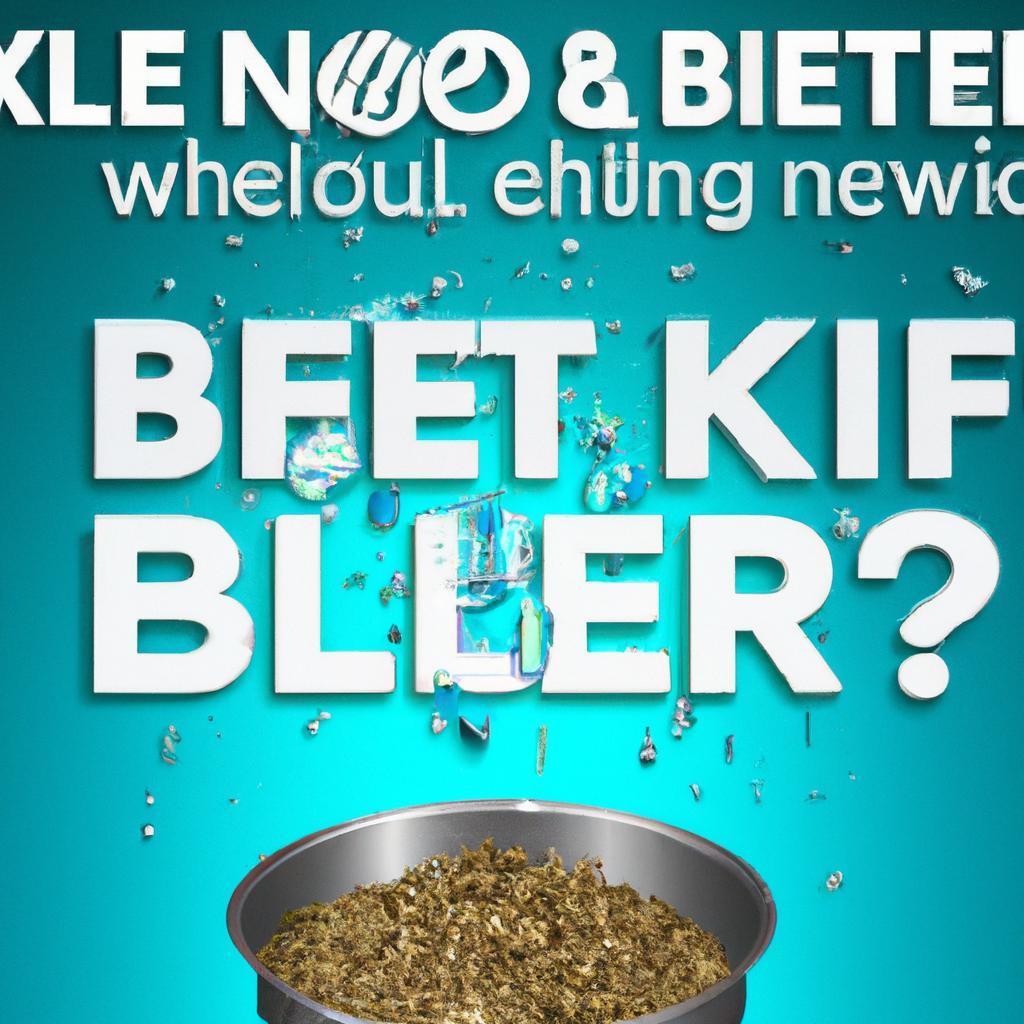In a cozy little house, two cats named Whiskers and Paws faced a daily dilemma: wet food or dry food? Whiskers adored the savory aroma of the wet food, savoring each bite like a gourmet meal. Paws, on the other hand, loved the crunch of dry kibble, relishing the satisfying sound it made. One day, their owner decided to mix both, creating a delightful feast. To their surprise, the combination brought out the best in both flavors, proving that sometimes, the best choice is a little of both. Balance, it seemed, was the secret ingredient to happiness.
Table of Contents
- Understanding the Nutritional Needs of Cats
- The Hydration Factor: Benefits of Wet Food
- Convenience and Cost: Evaluating Dry Food Options
- Making the Right Choice: Tailoring Diets to Individual Cats
- Q&A
Understanding the Nutritional Needs of Cats
When it comes to feline nutrition, understanding the specific dietary requirements of cats is essential for their overall health and well-being. Cats are obligate carnivores, meaning their bodies are designed to thrive on a diet primarily composed of animal-based proteins. This unique dietary need influences their nutritional requirements, which include a balance of proteins, fats, vitamins, and minerals. Ensuring that your cat receives the right nutrients is crucial for maintaining their energy levels, supporting their immune system, and promoting healthy skin and coat.
One of the key differences between wet and dry food lies in their moisture content. Wet food typically contains around 70-80% water, which can be beneficial for cats that may not drink enough water throughout the day. Adequate hydration is vital for preventing urinary tract issues and promoting kidney health. On the other hand, dry food, while lower in moisture, can be more convenient for pet owners and may help in maintaining dental health by reducing plaque buildup. Each type of food has its advantages, and understanding your cat’s individual needs can help you make an informed choice.
Another important aspect to consider is the ingredient quality and nutritional profile of the food. High-quality wet food often contains real meat as the primary ingredient, along with essential nutrients that support a cat’s health. Conversely, some dry foods may contain fillers and artificial additives that do not provide the same level of nutrition. When selecting food for your cat, look for options that list **real meat**, **whole grains**, and **natural ingredients**. Reading labels and understanding the nutritional content can help ensure that your cat receives a balanced diet.
Lastly, it’s essential to consider your cat’s age, activity level, and any specific health concerns when choosing between wet and dry food. Kittens, for example, may benefit from the higher moisture content of wet food, while active adult cats might thrive on a combination of both types. Additionally, senior cats or those with certain health conditions may require specialized diets that cater to their unique needs. Consulting with a veterinarian can provide valuable insights into the best dietary choices for your feline friend, ensuring they receive the nutrition they need to lead a happy and healthy life.
The Hydration Factor: Benefits of Wet Food
When it comes to feline nutrition, one of the most significant advantages of wet food is its high moisture content. Cats are naturally inclined to consume water through their prey, which typically consists of animals with a high water percentage. By offering wet food, you can help mimic this natural diet, ensuring your cat stays hydrated. This is particularly beneficial for cats that may not drink enough water on their own, as many felines are notorious for being finicky drinkers.
Hydration plays a crucial role in maintaining your cat’s overall health. Adequate water intake supports vital bodily functions, including:
- Kidney function: Proper hydration helps the kidneys filter waste more effectively, reducing the risk of urinary tract issues.
- Digestive health: Sufficient moisture aids in digestion and can prevent constipation, a common issue in cats.
- Skin and coat condition: Well-hydrated cats often have healthier skin and a shinier coat, reflecting their overall well-being.
Moreover, wet food can be particularly advantageous for senior cats or those with specific health concerns. As cats age, their thirst drive may diminish, making them more susceptible to dehydration. Wet food can serve as a palatable solution, providing essential hydration while also delivering necessary nutrients. Additionally, for cats with dental issues, the softer texture of wet food can be easier to consume, ensuring they receive adequate nutrition without discomfort.
Lastly, the variety of flavors and textures available in wet food can stimulate your cat’s appetite and encourage them to eat more. This is especially important for picky eaters or those recovering from illness. By incorporating wet food into their diet, you can enhance their mealtime experience, making it not just a necessity but a delightful part of their day. The hydration factor, therefore, is not just about water intake; it’s about enriching your cat’s life through thoughtful nutrition.
Convenience and Cost: Evaluating Dry Food Options
When it comes to feeding our feline friends, the choice between wet and dry food often boils down to convenience and cost. Dry food, or kibble, is typically favored for its ease of storage and serving. It can be left out for longer periods without spoiling, making it a practical option for busy pet owners. Additionally, the lightweight nature of dry food allows for easy transportation, whether you’re heading to the vet or on a trip. This convenience can be a significant factor for those with hectic lifestyles.
Cost is another critical consideration when evaluating dry food options. Generally, dry cat food tends to be more affordable than its wet counterparts. This price difference can be attributed to the manufacturing process and the ingredients used. Many brands offer a range of dry food products that cater to various dietary needs and preferences, allowing pet owners to find a suitable option without breaking the bank. However, it’s essential to balance cost with quality, as cheaper options may not provide the necessary nutrients for your cat’s health.
Moreover, dry food can contribute to dental health by helping to reduce plaque and tartar buildup as cats chew. This aspect of dry food can be particularly appealing to pet owners concerned about their cat’s oral hygiene. However, it’s important to note that not all dry foods are created equal; some may contain fillers and low-quality ingredients that do not support overall health. Therefore, it’s crucial to read labels and choose high-quality brands that prioritize nutrition.
While dry food offers convenience and cost-effectiveness, it’s essential to consider your cat’s individual needs. Factors such as age, health conditions, and activity level can influence whether dry food is the best choice. Some cats may thrive on a diet that includes both wet and dry food, allowing for a balanced approach that combines the benefits of each type. Ultimately, understanding your cat’s unique requirements will help you make an informed decision that supports their well-being.
Making the Right Choice: Tailoring Diets to Individual Cats
When it comes to feeding our feline friends, one size does not fit all. Each cat has unique nutritional needs influenced by factors such as age, weight, activity level, and health conditions. Understanding these individual requirements is crucial in determining whether wet or dry food is the better option. For instance, kittens and active cats may benefit from the higher protein content often found in dry food, while senior cats or those with urinary issues might thrive on the moisture-rich composition of wet food.
Another important consideration is the hydration aspect of a cat’s diet. Cats are notorious for not drinking enough water, which can lead to urinary tract problems and kidney issues. Wet food can play a significant role in increasing their water intake, as it typically contains around 70-80% moisture. This can be particularly beneficial for cats that are prone to dehydration or those who have a history of urinary tract infections. On the other hand, dry food can be more convenient and easier to store, making it a popular choice for many cat owners.
Moreover, the texture and palatability of food can greatly influence a cat’s preference. Some cats may prefer the crunchy texture of dry kibble, while others might find the soft, savory appeal of wet food irresistible. It’s essential to observe your cat’s eating habits and preferences, as a happy cat is more likely to maintain a healthy diet. Mixing both types of food can also be a viable option, providing the benefits of both while keeping mealtime interesting for your pet.
Lastly, consulting with a veterinarian can provide valuable insights tailored to your cat’s specific needs. They can help assess your cat’s health status and recommend a balanced diet that aligns with their lifestyle. Whether you choose wet, dry, or a combination of both, the key is to ensure that your cat receives the right nutrients to support their overall well-being. Remember, the best diet is one that caters to your cat’s individual preferences and health requirements.
Q&A
-
What are the main differences between wet and dry cat food?
Wet food typically contains higher moisture content, which can help keep your cat hydrated. Dry food, on the other hand, is more calorie-dense and can be more convenient for storage and feeding.
-
Which type of food is better for my cat’s health?
Both wet and dry food can be part of a healthy diet. Wet food can aid in hydration and is often more palatable, while dry food can help with dental health due to its crunchy texture. It’s essential to choose high-quality options regardless of the type.
-
Can I mix wet and dry food for my cat?
Yes, many cat owners choose to mix wet and dry food to provide variety and balance. This approach can offer the benefits of both types while catering to your cat’s preferences.
-
How do I choose the right food for my cat?
Consider your cat’s age, health, and preferences. Consult with your veterinarian for personalized recommendations, and look for foods that meet the nutritional standards set by the Association of American Feed Control Officials (AAFCO).
the choice between wet and dry food for your feline friend hinges on their unique needs and preferences. Whether you opt for the moisture-rich delight of wet food or the convenience of dry, a balanced diet is key to a happy, healthy cat.

大家好,我是彼得潘,專業的手法身體治療師。我喜歡探索和研究各種主題,並透過與人工智慧的合作分享專業、實用、有趣的文章。我們定期進行人工審核,以確保內容的準確性。如果您發現文章中有任何不準確的地方,請隨時與我們聯繫,我們會及時糾正。您可以透過 [email protected] 與我們聯繫。



